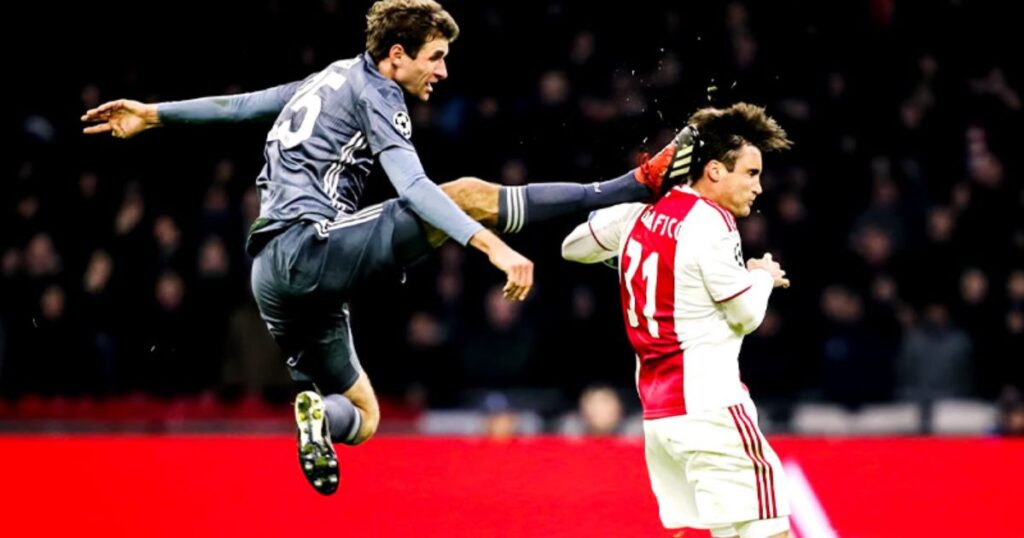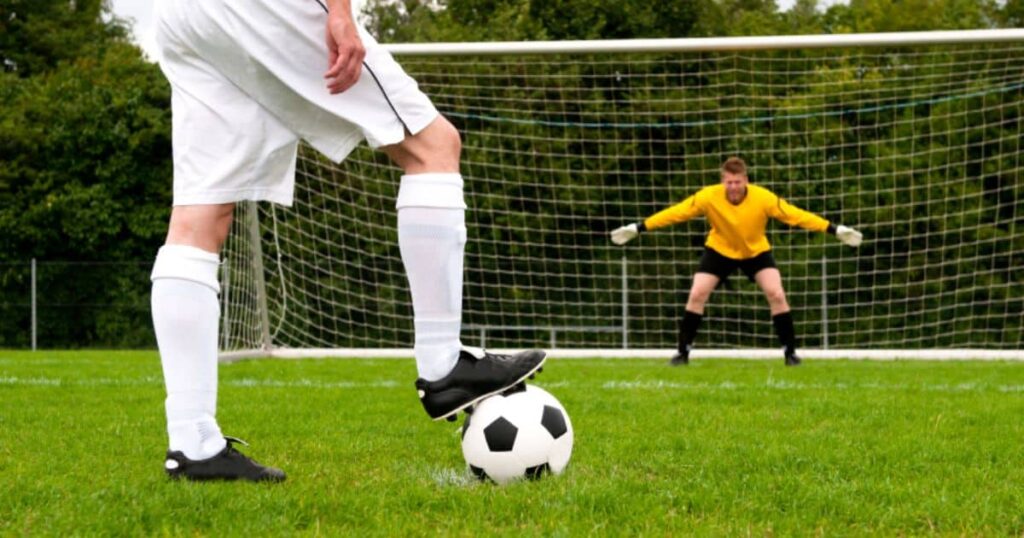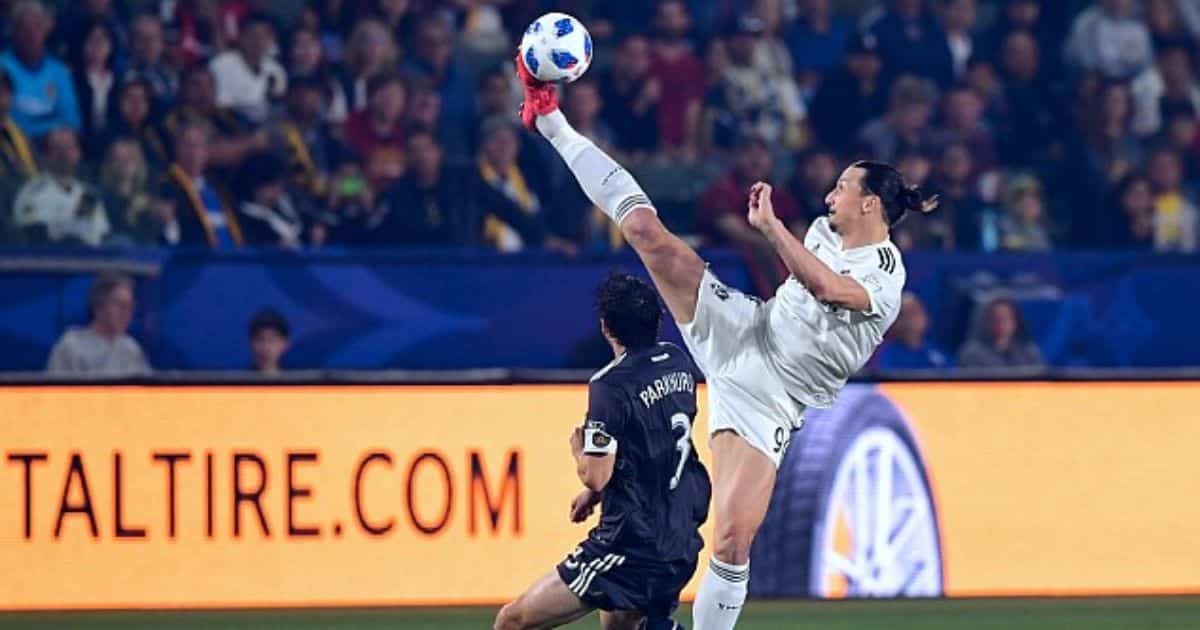In soccer, a high kick involves forcefully launching the ball into the air with one’s legs. This action is executed above the head for maximum height. It is done to lob the ball over defending players or to head the ball into the goal. Players perform a high kick by planting their non-kicking leg firmly. They swing the kicking leg high and make contact with the top of the ball to generate power and height for the kick.
Have you ever watched in awe as players whip the ball high into the air with seemingly effortless kicks? This skillful maneuver is known as the “high kick in soccer.” Players use their leg muscles to lift the ball above their heads and bypass opposition through the air. A high kick involves raising the ball significantly over one’s head through a forced kicking motion. This is done to lob the ball downfield or toward the goal.
High kicks in soccer can help advance the ball into scoring positions for strikers. They are effective when delivered with accuracy into open spaces on the field. Coaches teach players to use lobs as an important tactical weapon. It helps them bypass opponents and counter their pressing efforts. With practice, high kicks become more controlled and effective for players seeking to surprise opponents and switch ball possession.
What Is a High Kick in Soccer
A high kick in soccer refers to a technique where a player forcefully kicks the ball high into the air above their head using their leg. To perform a high kick, the player will plant their non-kicking foot firmly on the ground near the ball to provide stability. Their kicking leg is then swung upwards towards the sky making full contact with the top half of the ball. This generates power and lifts the ball into a high arching trajectory. The high kick sends the ball soaring over opponents to bypass their defenses. It is a handy skill in soccer that can help clear balls or launch precise long passes downfield.
Defensive Clearing
A high kick can help defenders clear the ball away from their own goal quickly when under pressure to relieve attacking threats.
Buildup Play
It allows midfielders to loft passes into open space for teammates further up the pitch to run onto. This can transition a team up the field.
Chance Creation
Strikers may arc high kicks towards the opponents’ penalty area for other attacking players to run onto or head towards the goal.
Lobbing the Keeper
With accuracy, a high lobbed shot can beat the goalkeeper as the ball drops into the net before they can react and reach it.
Consequences of a High Kick

In a Youth Soccer Game, a player attempting a high kick must be careful to execute it properly. If the ball is not kicked with enough power from the leg, it may just go up a short distance and come right back down. Kicking incorrectly could even lead to losing the ball to an opponent. The arching flight path of a high kick means there is time for defenders to get under the ball if the pass lacks accuracy. A poorly aimed clearance might travel out of bounds. With practice, players learn to minimize these negative outcomes.
Defensive Errors
A mishit clearance could send the ball back towards their own goal, aiding the opposition attack instead of relieving pressure.
Turnovers in Buildup
Misplaced lob passes provide opponents chances to intercept and launch a counterattack deep in the other half.
Wasted Attacks
Errant high shots or crosses may sail over everyone’s heads into empty space, squandering a team’s possession.
Conceding from Mistakes
Very high kicks that lack control could result in own goals if defenders are unable to adjust and prevent the ball from entering their net. Proper technique is a must.
Is a High Kick a Penalty in Soccer

A high kick is permitted under the Laws of the Game as long as it is performed safely and with control. Players are allowed to kick the ball above their head height with their leg as a legitimate way to pass or move the ball upfield. However, if a high kick endangers an opponent by recklessly swinging the foot near their face or body, the referee may issue a yellow or red card depending on the severity of the contact. A referee may penalize any high kick that seems more like a hazardous action than a sincere effort to play the ball with a foul.
Accidentally making high contact with an opposing player in a challenge for the ball is usually not considered a penalty, unless the force used was excessive or careless. The key thing referees consider is whether the height of the kick was reasonable and unexpected given the circumstances on the pitch. As long as a player is not attempting to hurt someone and kicks the ball first, a high kick itself should not be penalized according to the rules. If the motion is deemed to involve reckless or dangerous conduct, referees would only issue cautions or fouls.
Is a High Kick a Red Card
The referee may issue a red card if they determine a high kick to be too reckless or dangerous. Although players are permitted to execute the action of kicking the ball above one’s head, any high kick that jeopardizes the safety of an opposing player may be deemed as the use of excessive force. If the high swinging foot makes direct contact with another player’s head, face, or body in a way that could have seriously injured them, a red card sending-off is a possible consequence. Referees analyze the speed and lack of control in the high kicking motion in these situations.
A yellow card may suffice if a player is clearly attempting to play the ball first in a competitive manner, shows no brutality, and the contact is not near the face. Referees must use their judgment to determine if a denial of an obvious goalscoring opportunity occurred. They also need to assess whether serious foul play rising to the level of violent conduct happened from the high kick. These factors determine if the infraction was merely reckless or truly endangering to an opponent.
FAQ’s
What is a scissors kick in soccer?
In soccer, a scissors kick is an acrobatic bicycle kick technique. A player jumps and kicks the ball behind their body mid-air to score an overhead goal.
What is high foot in soccer?
In soccer, a high foot is when one raises their foot above waist height toward an opponent. This usually happens when competing for the ball. Reckless play is usually considered, and it can result in the referee calling a foul.
What do we call a soccer kick?
When aiming to score a goal, players typically refer to a soccer kick as a shot. I”When attempting to send the ball to a teammate, players call it a pass.” Other soccer kicks have more specific names like goal kicks, corner kicks, or punts from the goalkeeper.
Conclusion
The high kick is an important skill in soccer that can help players clear balls or launch accurate long passes. It allows teams to bypass opponents’ pressure and transition up the field quickly. If done recklessly in a dangerous manner, it could lead to penalties from referees like yellow or red cards. Players can develop the technique and understanding of executing high kicks effectively in different situations with regular practice. This skill becomes an asset for their team. Mastering this advanced skill opens up new strategic options in games.
Overall, the high kick, if performed properly, is a legitimate way for soccer players to move the ball in the air according to the rules. Referees will not penalize accidental high kicks during challenges or those that do not endanger safety. On the pitch, players must always try kicking the ball first. Play in a way that avoids endangering others with high kicks above the waist. Prioritize safety to prevent the risk of injury.






